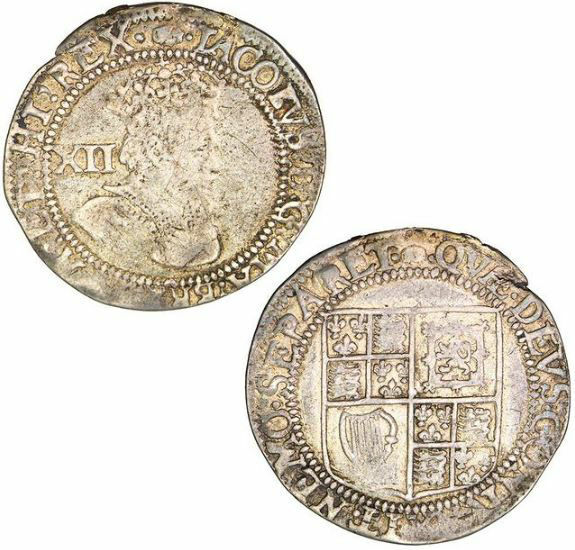By the early seventeenth century, the shilling was established as an important denomination. All James I’s issues are undated and have the bust of the king with the denomination behind on the obverse and the royal arms on the reverse. The various issues can be distinguished by the reverse legend, the mintmark at the beginning of the obverse and reverse legends, as well as by the style of the bust. However, should the bust be difficult to identify, some mintmarks are specific to particular issues and may be used to identify a coin. One scarce issue also has a large plume above the reverse shield. It should be noted that several Scottish issues, produced during the reigns of James VI and Charles I, are fairly similar to James I’s English shillings, except for differences in the royal shield and, sometimes, the legends. However, should a coin have a large harp on the reverse only, it is an Irish issue.
Most James I shillings are fairly common and usually found in less than Fine condition, often with a very worn portrait. Although collectors should have little difficulty obtaining an example in Fine or VF. EF specimens are rare and desirable, Shillings are rarely clipped but often found with deliberate scratches on them for which there does not seem to be a plausible explanation, but may be done by anti-royalists. Because of the quality of the strike, the reverse of the coin is usually in better condition than the obverse. Have a closer look at this example in Very Fine with no scratches below.

SEE OTHER COINS FROM JAMES I REIGN
Follow us on Instagram and Facebook and be one of the first collectors to read our tips.

























